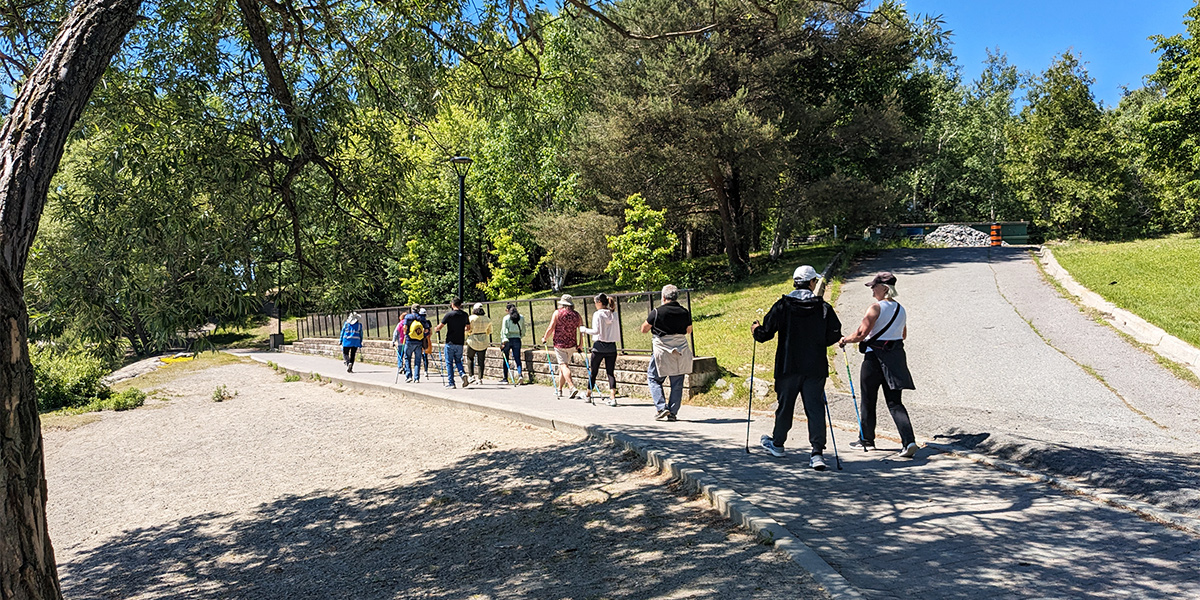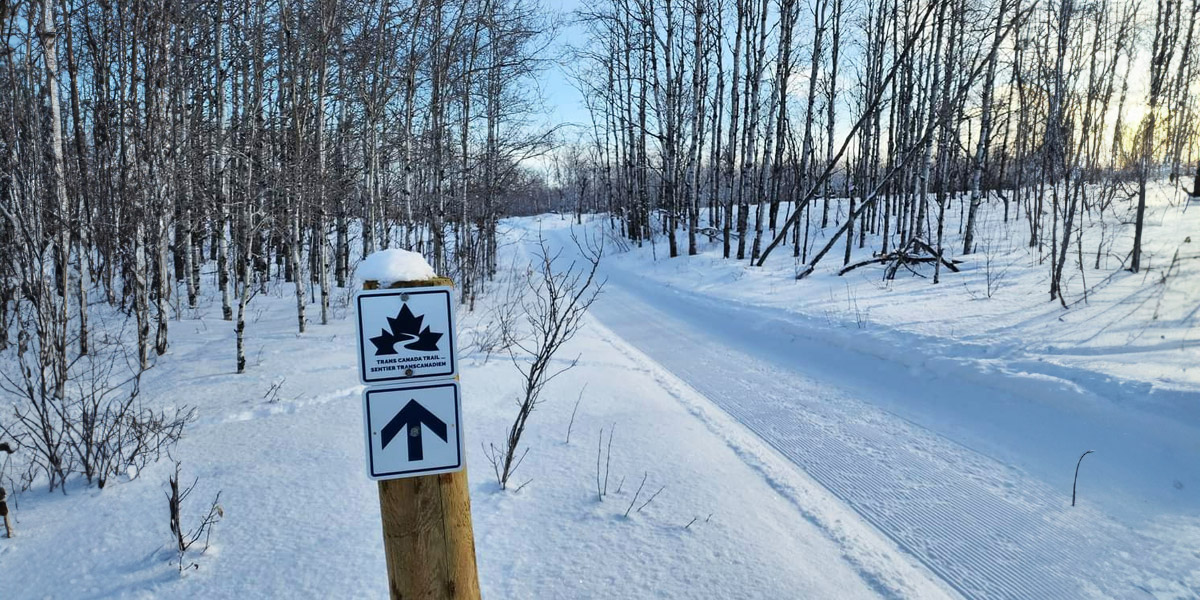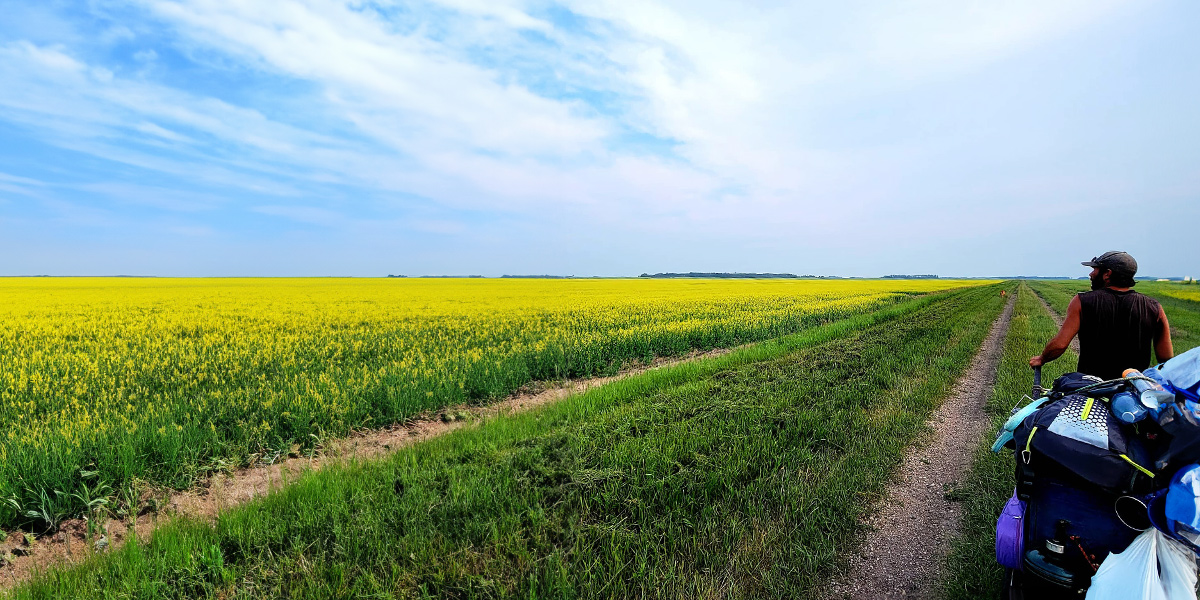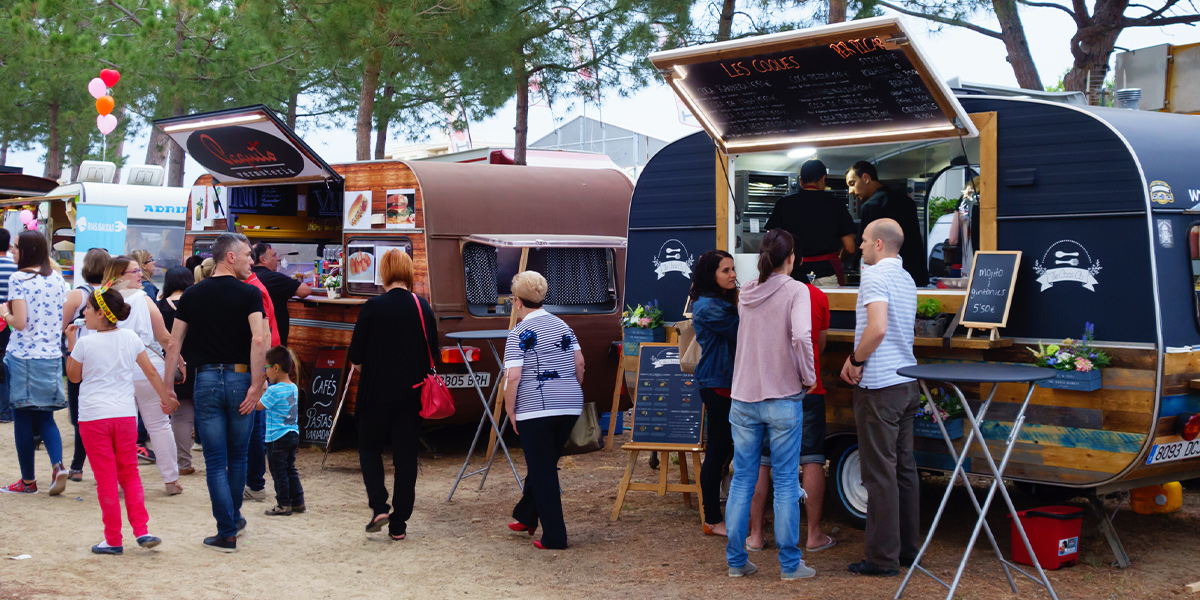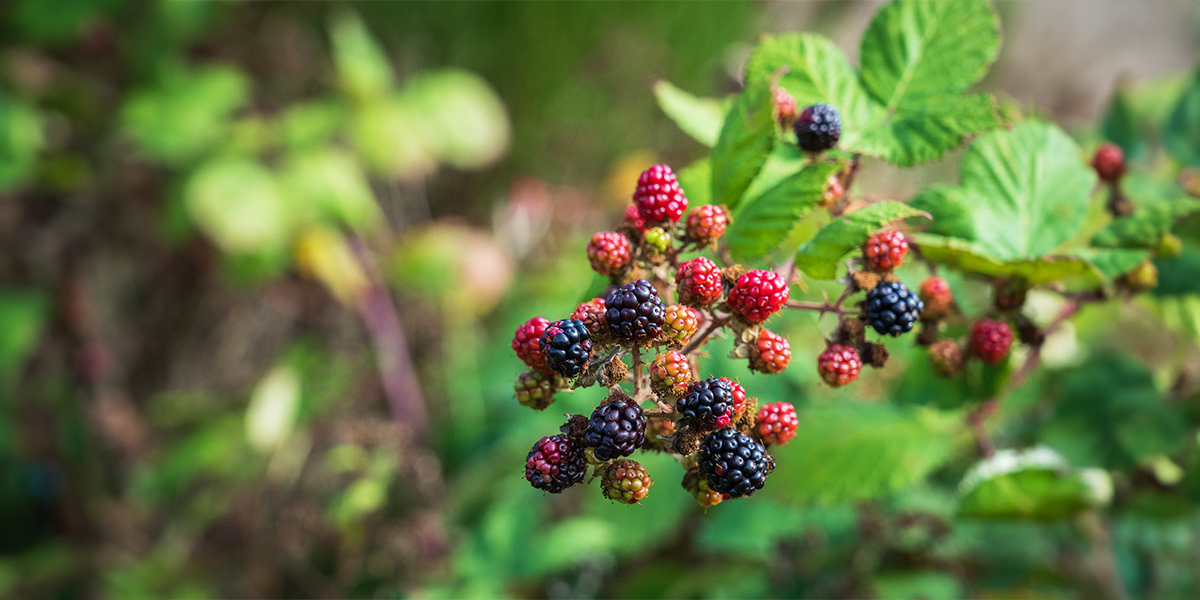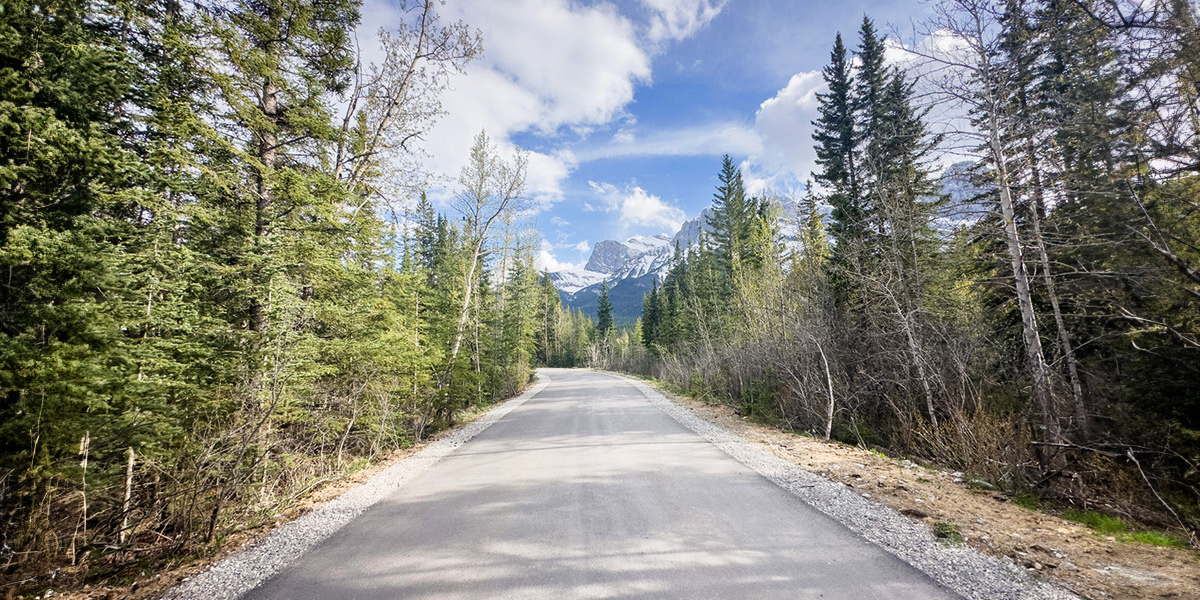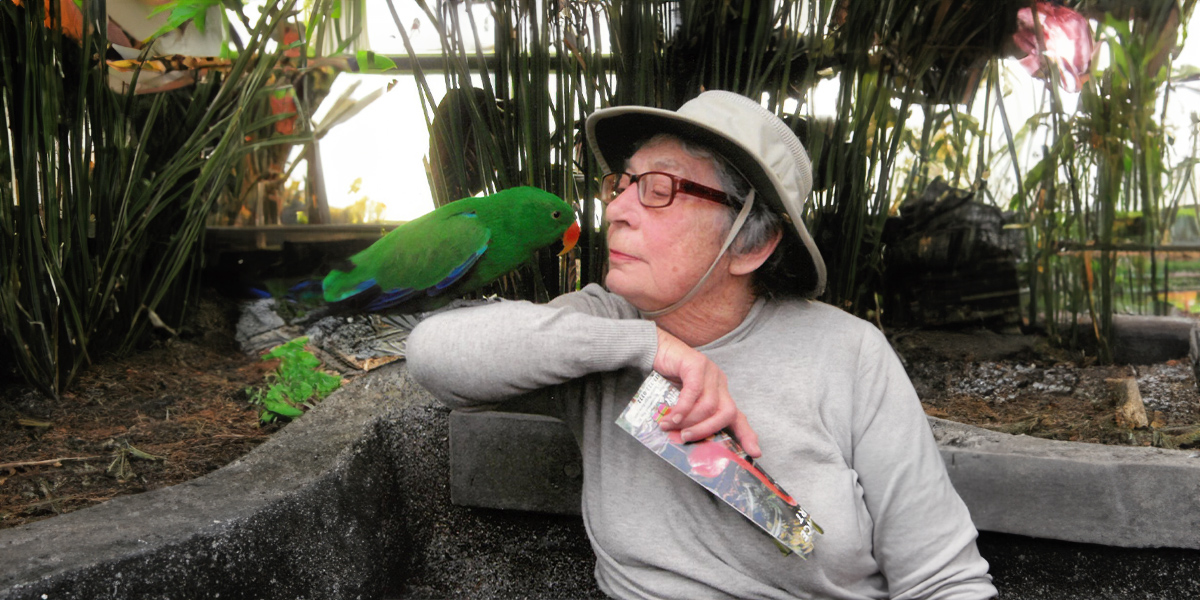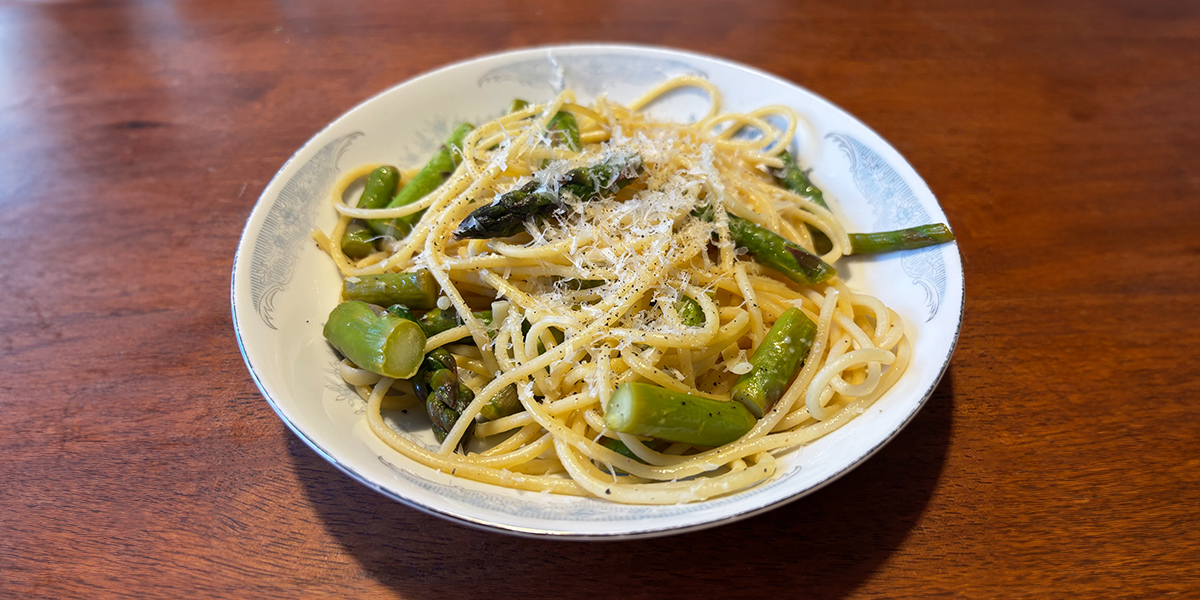Nicola’s Trans Canada Trail: How Trails Protect the Things We Love
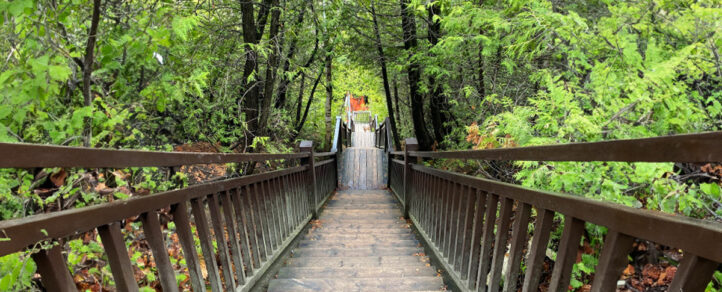
By Nicola Ross
“Good thing this unopened road allowance is here,” a former Caledon councilor who has a master’s degree in environmental studies once told me. “Otherwise,” he continued, “I bet the Forks of the Credit Provincial Park would have been sold off and mined for the gravel underfoot.”
And how sad that would have been, since the Trans Canada Trail, among others, transects the park – part of it via the unopened road allowance the former councilor was referring to. The 200-hectare Forks of the Credit Park is my favourite place in the world, the place where, one day, I hope a small handful of my ashes will be tossed into the air and carried away on a soft breeze over the park’s open meadows. When I was a kid, I didn’t know the park was where the Oak Ridges Moraine butts up against the Niagara Escarpment, the pair of protected areas contained in Southern Ontario’s Greenbelt.
Back then, I had no idea the Bruce Trail and the Trans Canada Trail would one day help protect the spot where my dad erected a tripod over an open fire so he could heat a huge cauldron of onion soup he’d prepared for our annual Thanksgiving picnic. I just knew that soup tasted better outdoors, that the fall colours would be at their best and, most importantly, the park’s steep hills were great places to roll wiener-like, faster and faster downhill. Wobbling to my feet after the dizzying experience was even better than my dad’s onion soup.
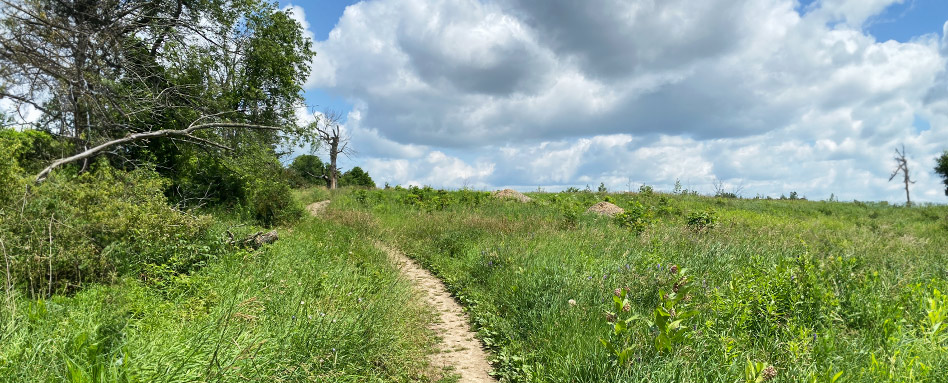
As the author of a series of hiking guides, I’ve travelled much of Southern Ontario’s rich network of trails. I now realize that most of these ‘passages through nature’ take advantage of unopened road allowances, former railway lines and hydro corridors. The 43-kilometre section of the Trans Canada Trail that runs through Caledon, a rural municipality in Toronto’s urban shadow, is a good example. Eighty percent of it follows rights-of-way, including the unopened road allowance mentioned above, as well as two former railway lines: the Elora Cataract Trailway and the Caledon Trailway.
I have no doubt that without these remnants of public land, there would be no Trans Canada Trail in Southern Ontario. Similarly, without trails such as the Bruce Trail, Oak Ridges Moraine Trail and dozens more, including the Trans Canada Trail, considerably more of them would, as the former councilor suggested, have been sold off by cash-strapped governments at all levels.
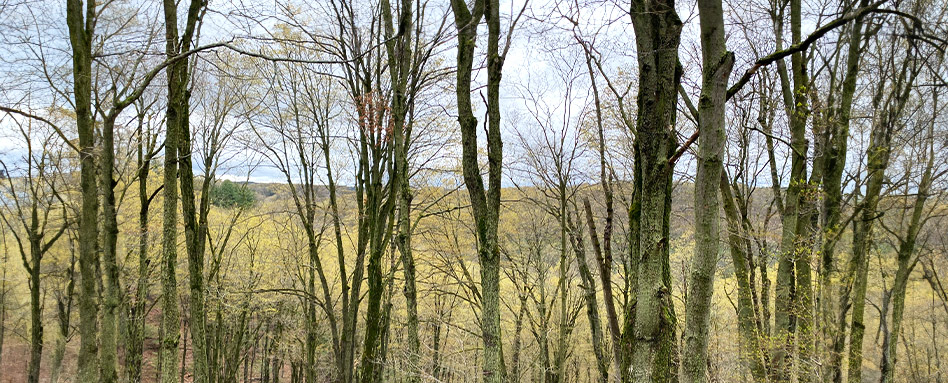
The idea that we protect what we love is an oft-repeated phrase that I believe to be true. And across Canada, from coast to coast to coast, we love our trails. If we didn’t realize it before the COVID pandemic, we are more aware of the value of the paths that criss-cross our neighbourhoods in its aftermath. I can hear it now: “Don’t mess with my walking route.”
I’m like that with trails, including the section of the Trans Canada Trail in the Forks of the Credit Provincial Park. There’s magic in walking through the park’s extensive tall-grass-prairie meadows where I might catch a glimpse of a bobbing bobolink or hear the song that alerts me to the presence of an orange-breasted Baltimore oriole. I sit contently gazing over the park’s kettle lake on the lookout for waterfowl. My feet drag me to the Credit River, where they demand a long dip in the chilly, fast-flowing water. Looking at the ruins of the old electricity generating station, I am reminded of nature’s power when I recall the pair of schoolmates who plunged to their death after their dare-devilish behaviour resulted in their being swept over the Cataract Falls. I refer to the sugar maples that I admire from the ridge top as “basketball trees,” given their unusual height. The meadows filled with common milkweed attract monarch butterflies after their long migration. I know where to find the most spectacular white trilliums and have a favourite apple tree. As I kick the toes of my shoes into the sandy soil amid an ocean of horsetail ferns, I remark to myself: I’m back on the moraine again.
I have a snapshot of my mother, who died at 94, striding through the park’s open meadow. She’s wearing a green sweatshirt emblazoned with the words “Sixty and Sexy.” I relish vivid flashbacks of my late father, an apron around his waist, stirring that onion soup in that enormous cauldron hung over an open fire. Then my stomach churns as I recall rolling wiener-like down those steep Forks of the Credit Park hills.
I leave you with this message: If you learn that a public right-of-way is at risk, do what you can to protect it. Our current and future trail systems depend on you.
This story is part of a series where Trail users share their experiences. Born and raised among Caledon’s hills, Nicola Ross is the best-selling author of a dozen books, including the Loops & Lattes series of hiking guides and 40 Days & 40 Hikes: Loving the Bruce Trail One Loop at a Time (available April 2024).


